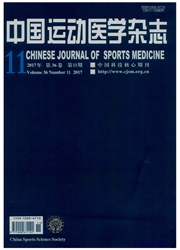

 中文摘要:
中文摘要:
目的:探讨脂肪组织来源干细胞(adipose-derived stem ceils,ADSCs)和核心结合因子(Core Binding Factor Alpha 1,Cbfa1)的成骨潜能及其应用于基因增强的骨组织工程临床治疗的可能性.方法:利用重组了Cbfa1的腺病毒载体在ADSCs中过表达Cbfa1.采用Realtime RT-PCR定量检测成骨特异性基因和成脂特异性基因的表达变化.同时采用Von Kossa染色观察Cbfa1过表达后21天ADSCs内钙盐的沉积情况.在体内实验中,裸鼠右下肢肌肉内注射Cbfa1基因修饰的脂肪来源干细胞,8周后,采用石蜡切片(HE和甲苯胺蓝染色)检测软骨和骨的生成情况.结果:Cbfa1转染后3天,ADSCs中检测到Cbfa1 RNA表达,及骨钙素、骨桥素、Ⅰ型胶原表达,同时脂蛋白脂酶表达下降.Vocassa染色证明,转染Cbfa1后,ADSCs细胞基质中的钙盐沉积显著增加.体内实验8周后,注射Cbfa1基因修饰的脂肪来源干细胞的肌肉内有明显的软骨和骨组织形成.结论:Cbfa1过表达可定向诱导ADSCs体外钙盐沉积和体内成骨,可作为基因增强的骨组织工程中有潜力的治疗基因和载体细胞.
 英文摘要:
英文摘要:
Objective To determine the effect of overexpression of core binding factor alpha 1 (Cbfal)in adipose-derived stem cells (ADSCs)on the bone mineralization and formation in vivo. Methods Cbfal expression was assessed by realtime PCR. Bone mineralization in vitro was detected by von Kossa stain on day 21. Ad-Cbfal-ADSCs mixture was injected into the muscle of nude mouse and subjected to histological analysis 8 weeks later. Results 3 days after Cbfal transfection,expressions of Cbfal RNA,osteocalcin,bone bridge,and type I collagen appeared,while lipoprotein lipase (LPL) expression decreased. At the same time,calcium salt deposition in the cell matrix of ADSCs markedly increased. There was apparent bone formation in muscle injected with Cbfal modified ADSCs. Conclusions Overexpression of Cbfal in adipose-derived stem cells enhances bone mineralization and formation in vivo, demonstrating a potential of bone tissue engineering for bone repair.
 同期刊论文项目
同期刊论文项目
 同项目期刊论文
同项目期刊论文
 One-step repair for cartilage defects in a rabbit model: A technique combining the perforated decalc
One-step repair for cartilage defects in a rabbit model: A technique combining the perforated decalc 期刊信息
期刊信息
